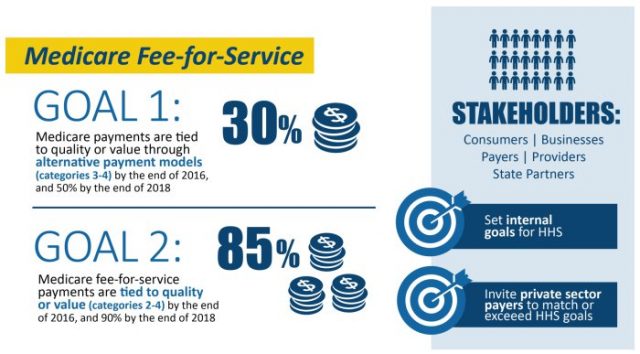As we mentioned at the end of last week, we’re excited to start a new series of blog posts called MACRA Monday. Over the next months (and possibly year(s)), each Monday we’ll step through the MACRA legislation and share the details of MACRA with you the reader. Many of you might have read our Meaningful Use Monday series which we wrote for a couple years leading up to meaningful use. This will be similar. You can find all the latest MACRA Monday posts here.
Before we begin, it’s worth mentioning that CMS has posted all the latest updates and details related to MACRA here. That’s largely where we’ll get our information for this series, but hopefully we can provide it to you in a more digestible format. Plus, we’ll add in our own opinions, views, and comments that will hopefully add even more value. At the end of the day, like it or not MACRA and value based care is heading your way. Knowing the details about it will better help you make decisions for the future of your practice.
In all of the CMS presentations on MACRA, they always start off with a slide that includes the same image. So, I thought it would be appropriate to start off MACRA Mondays with this image as well.

No matter what happens to MACRA and other government programs, this slide illustrates the goals that CMS wants to achieve in healthcare. They want to shift the reimbursement from the current fee for service model into alternative payment models that pay for quality and value. CMS has said that they’ve already achieved their 30% goal for 2016. I think they’re being generous with their numbers, but that’s a topic for another day. Regardless of the details, CMS has clear goals to shift the healthcare system to a value based care model. MACRA is one major element of that effort.
What is MACRA?
The recent study by Deloitte found that a large portion of doctors are unaware of MACRA. Some had heard of MACRA, but didn’t know any more details. That’s a pretty scary thing considering MACRA will impact most ambulatory practices that participate in Medicare.
At the core of the MACRA legislation was two main goals: replace the Sustainable Growth Rate (SGR) and create a single framework – quality payment program. In the case of SGR, MACRA was the long-term solution to the annual “Doc Fix” or “SGR Fix” which literally shut down our government as congress debated how to address it. Along with replacing SGR, MACRA also streamlined multiple quality reporting programs into APMs (Advanced Alternative Payment Models) and MIPS (Merit-based Incentive Payment System).
We’ll talk in more detail in future MACRA Mondays about which programs ended up where and what they look like under MACRA. For now, we’ll just say that the new APM and MIPS programs consolidated programs such as PQRS, the Value Based Modifier, Meaningful Use (Officially called the Medicare EHR Incentive Program), ACOs, and PCMH to name a few.
Before I end this intro to MACRA, it’s worth noting that the MACRA rule is still only a proposed rule. So, everything we talk about now is talking about what’s part of the proposed rule. Certainly, any and all of this could change. The MACRA comment period ended June 27, 2016 and CMS received 3,710 formal comments (some of them extremely lengthy). However, given past changes to proposed rules (or lack thereof), I’d be surprised if anything changed too dramatically. We’ll talk more about possible changes in a future post.
We’ll be back next week with another MACRA Monday talking about who will be impacted by MACRA and whether your practice should be worried about participating in the APM or MIPS program.













